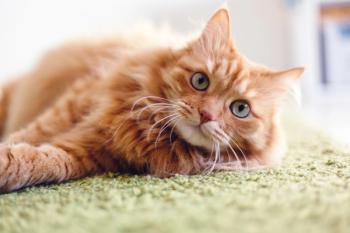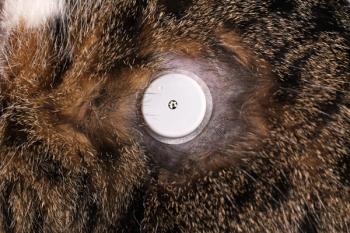
Diabetes cases may be climbing, but steadfast management can get patients into remission
Dr. Lori A. Wise answers questions about managing the rise in diabetes in companion animals.
Editor's Note: Lori A. Wise, DVM, Dipl. ACVIM, is a partner with Wheat Ridge Veterinary Specialists in Wheat Ridge, Colo. She has special interests in diabetes mellitus, renal disease and immune-mediated diseases. She recently spoke with DVM Newsmagazine about trends in incidence, compliance and management of diabetes cases. Next month, Wise continues the discussion about the management and remission of diabetes.
DVM: Are veterinarians seeing more cases of canine and feline diabetes?
Wise: There was a Banfield Pet Hospital study called the "State of Pet Health 2011 Report" that looked at the incidence of diabetes in dogs and cats. They found that one in every 50 to 400 cats is diagnosed with diabetes. In dogs, it is quoted at one in every 200 dogs. And these data further reflect an increasing incidence. The study shows a 32 percent increase in diabetes mellitus in dogs from 2006 to 2010 and a 16 percent increase in diabetes mellitus in cats during that same time period. There is a subjective feeling that we are seeing more cases of diabetes in dogs and cats, and it could likely be an increased incidence related to lifestyle. There are probably more sedentary/indoor cats that are overweight and of an older age. Obesity and inactivity are all risk factors for diabetes in cats. That is probably a relationship indicator for diabetes in cats. This trend also follows the incidence of diabetes in people.
One important concept is that obesity leads to insulin resistance. Sometimes these diabetic patients are also on weight-control diets. Those diets tend to be higher in carbohydrates. Years ago, we used to think that if you had a diabetic cat, the thing to do would be to put them on a weight-control diet. In fact, it was the exact wrong thing to do and opposite of what we need to do for these cats.
We know now that low-carbohydrate diets are more advantageous for diabetic cats, and the weight-control diets happen to be high-carbohydrate diets. So, when we look at the percentage of carbohydrates in the diet for a diabetic cat, we try to keep it at 8 to 10 percent carbohydrates. Keep in mind that some of the weight-control diets are in the 27 to 28 percent range for carbohydrates.
A hot topic that I am interested in listening to at internal medicine meetings is the debate about whether all cats should be on low-carbohydrate diets from the start. The jury is out, and I don't think we have strong evidence to say that all cats need to be on low-carbohydrate diets. But when they are diagnosed with diabetes, it is an important factor to try to regulate their diabetes.
To get a cat into diabetic remission, I think one very important factor is having them on a low-carbohydrate diet. There are two camps in regard to prevention of diabetes. I don't think the low-carbohydrate diet is universally thought to be a preventive measure, but weight control is for sure. That's also a challenge when you have an indoor cat on a very palatable diet. You have to control their intake and increase their activity. It's hard because most people want to feed their cats free choice. It's convenient, and many cats won't stay active enough indoors to control their weight if they are fed free choice.
DVM: When talking with clients about managing diabetes, what strategies have you found the most successful?
Wise: I don't know that there is any one magic solution. Each client is different. Teaching them how to monitor the cat closely and how to calculate calories are very important. I have clients who are still surprised that an animal can even become diabetic. And most clients really have no idea how much their cat should be eating a day.
And it really is a surprisingly small amount of food for most indoor cats. Most people are surprised to find that they may only need a quarter of a cup of food a day. It's hard for people to make the commitment, especially when the dog or cat is constantly begging for more food. The other issue is that you want to keep these pets more active. I tell clients to hide food so the dog or cat spends more time looking for their food then just sitting on the couch. They have to seek their prey, so to speak.
Also, try to get clients to spread their feeding throughout the day to keep them satisfied. It is a little hard to find low-calorie treats for cats. You could think about recommending small pieces of cooked chicken. Freeze-dried tuna, chicken and other meat treats are other good options. That would give them the satisfaction. Finding low-calorie snacks for dogs is much easier because you can just give them a piece of carrot. Sometimes, I think dogs and cats are eating out of boredom. This will give them activities throughout the day rather than just waiting for food.
Newsletter
From exam room tips to practice management insights, get trusted veterinary news delivered straight to your inbox—subscribe to dvm360.




